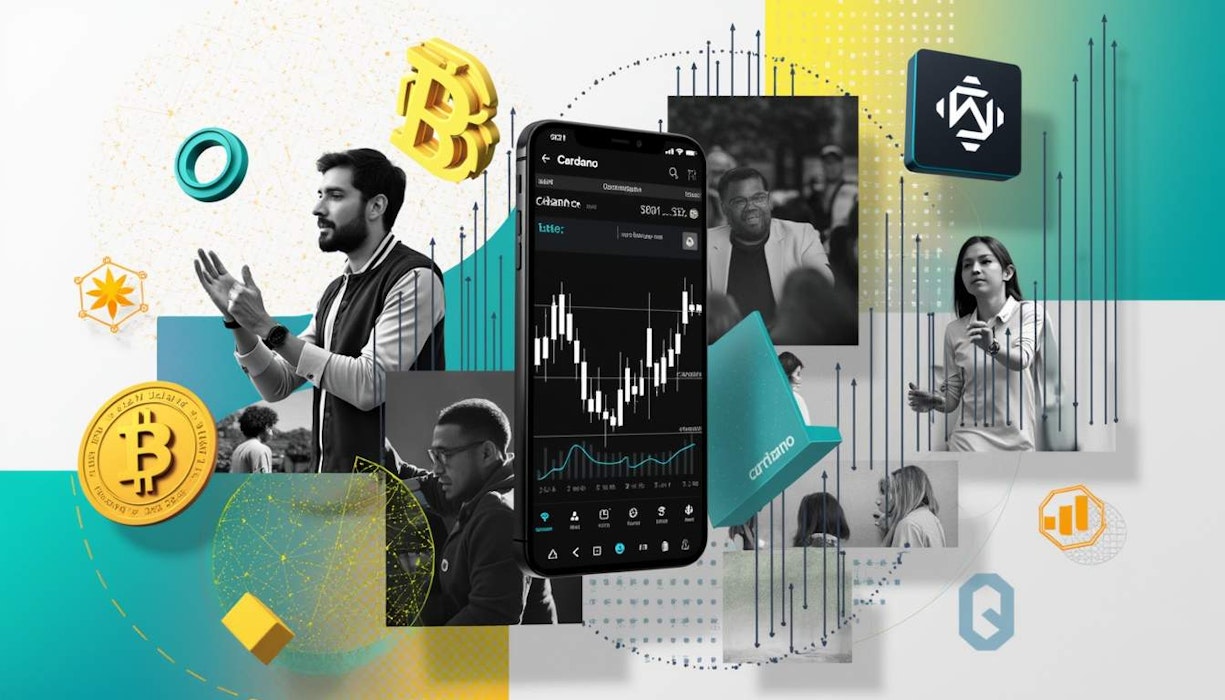What caused Cardano's recent price drop?
Cardano (ADA) has just faced a sharp decline, falling under the important $1.20 support level. What led to this drop? Well, it seems that a mixture of market volatility and profit-taking activities were to blame. A significant number of addresses, about 93,000, had purchased 2.54 billion ADA at this critical price point. As soon as the price broke below this level, those who bought at higher prices started to sell, causing a ripple effect.
How does on-chain activity influence Cardano's price?
On-chain activity is very important for determining the price direction of cryptocurrencies like Cardano. Recent reports show that there has been an uptick in Cardano's on-chain activity, with the 30-day active address count hitting 1.24 million. This could suggest that people are still actively using the network, possibly because of new developments in the ecosystem and hopes for future updates. But even though there’s more activity, it doesn't always mean an immediate price recovery. Market sentiment and the overall market climate also weigh heavily on prices.
What are the implications of Cardano's price drop for investors?
Investors need to think carefully about what this price drop means for them. This serves as a reminder of how volatile the crypto market can be. Those who bought ADA at higher prices may be looking at losses now, which can change how they approach trading. Data indicates that around 34.44% of ADA is "in the money" (held at a profit), while 64.68% is "out of the money" (held at a loss). This situation could lead to even more selling if the price keeps decreasing.
How can Cardano recover from its current price slump?
How can Cardano bounce back from this downturn? The next support level seems to be around the $1 mark, which may provide some stability. However, technical indicators like the Relative Strength Index (RSI) and the Choppiness Index suggest that the market could remain tumultuous for a while. That said, continuous network activity and positive developments in Cardano's ecosystem could help ignite a recovery. Broader market sentiment and conditions will also be crucial for any uptick in price.
What strategies do exchanges use to manage volatility in crypto markets?
Exchanges have their work cut out for them when it comes to managing volatility in crypto markets. So, how do digital currency trading platforms handle this? They typically use several strategies:
- Solid Infrastructure: Making sure their tech can handle busy periods without failing.
- Risk Assessment: Using different techniques to identify and mitigate risks.
- Monitoring: Keeping a close eye on transactions to spot anything unusual or suspicious.
- Security Features: Utilizing features like multi-factor authentication to protect transactions.
- Liquidity Pools: Maintaining pooled liquidity to keep prices stable.
- Market Order Limits: Implementing tools to avoid extreme price jumps and sudden losses.
- Stablecoin Integration: Providing stablecoin pairs for a safe haven during volatility.
- Algorithmic Trading: Using pre-set strategies to manage risk.
- Circuit Breakers and Dynamic Fees: Using trading halts and fees to prevent panic.
- Real-Time Monitoring: Keeping track of price changes and trading volume in real-time.
All these strategies are designed to ensure that platforms can effectively manage volatility and keep investor assets safe.
Summary
In summary, Cardano's recent price drop below $1.20 serves as a reminder of the crypto market's volatility. While increased on-chain activity is a good sign, the price recovery will depend on various factors, including market conditions. Digital currency trading platforms have a range of strategies at their disposal to manage volatility and safeguard investor assets. As Cardano navigates this challenging period, investors should remain vigilant and informed.
